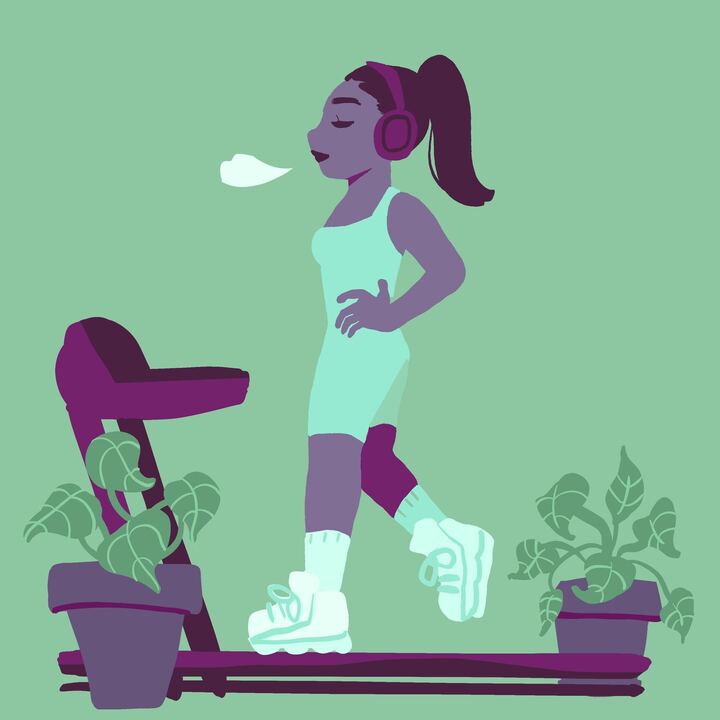When I was seventeen, I returned from a trip abroad with a mysterious illness. What started as flu-like symptoms that lasted for months turned into continuous nausea and vomiting, and eventually uncontrollable tremors that severely inhibited my ability to function.
I missed almost my entire senior year due to the illness. Desperate to get better, I saw medical professionals of every specialty in search of a diagnosis. And, at a time in my life when additional duress was the last thing I needed, I was treated pretty horribly by doctors.
As soon as they realized my symptoms didn’t neatly check all the boxes of a standard diagnosis, my doctors began to look in the complete wrong direction. They categorized me almost immediately as a type-A, high-achieving teenage girl whose apparent “anxiety” (this was not an issue I ever complained of at the time) had gotten the better of me. Essentially, my illness was “all in my head.”
One doctor went so far as to suggest I stop seeking medical treatment and start seeing a psychologist. Had I listened to his dismissive prescription, I would never have gotten better.
It was a female doctor who listened to me without judgment for the first time, who finally ordered a brain scan to assess my obvious neurological issues, who, using that scan, noticed the slight anatomical anomaly in my cerebellum that was a factor in all of my symptoms.
That female doctor finally found the treatment for my condition that allowed me to return to life as a normal college student.
This is not to suggest female doctors are better than male ones. This is to suggest that the doctors who were most sensitive to my experiences as a young woman were the same ones who disregarded unfair gender biases to provide the best care.
The medical system is still plagued with biases that damage healthcare outcomes for women. When the cause of an ailment isn’t obvious, doctors are way more likely to default to a psychological explanation for women than for men with the same symptoms. Far too many women have experiences similar to mine; sadly, of those women, some are unfortunate enough to never receive an accurate (sometimes life-saving) diagnosis.
Dismissal of women’s legitimate health concerns plays into the ancient notion of hysteria, a panacea diagnosis derived from the Greek cognate “hystera”—which literally means uterus. A “diagnosis” of hysteria basically means “I have no idea what’s wrong with you, but you’re a woman, so you’re probably just crazy.”
According to the revered “Diagnostic and Statistical Manual of Mental Disorders,” hysteria existed as a legitimate medical diagnosis for women as recently as 1980. Though hysteria is no longer a valid medical term, its implications remain deeply rooted in modern healthcare.
Cardiologist Dr. Adam Splaver reveals: “In [medical] training, we were taught to be on the lookout for hysterical females who come to the emergency room.”
To this day, doctors are taught to embrace the “hysterical female” perspective. They dismiss women who seek care for physical emergencies as anxious, hypochondriacal or attention seeking.
Consequences of this bias can be disastrous for women. In an essay for Pacific Standard Magazine, Maya Dusenbery speaks of two friends who faced blatant misdiagnoses due to gender bias. Doctors insisted the first woman’s “stabbing chest pain” was merely anxiety before they realized it was pericarditis—inflammation of the lining around the heart. A doctor dismissed another friend’s “dizziness, wooziness, ringing in [her] ears, and floaters in [her] eyes” as depression, suggesting she see a therapist. The woman had West Nile virus.
Doctors with training like Splaver’s put women in real danger. According to the New England Journal of Medicine, women under 55 who present in emergency rooms with heart attack symptoms are “seven times more likely to be misdiagnosed than men of the same age. The consequences of this [are] enormous: being sent away from the hospital double[s] the chances of dying”.
Statistics like this further discourage women from seeking medical help when it is warranted. Women are made to doubt their own instincts and dismiss concerning symptoms for fear they’ll be mistaken for crazy. This self-doubt worsens health outcomes for women and perpetuates the cycle of malpractice.
For some, women’s empowerment is the key to mitigating hazardous biases. If a woman knows her body, is familiar with the warning signs of medical emergencies and is willing to fight for proper care, she will be taken seriously. Such a mindset involves victim-blaming: it shifts the burden of proof to the sick, when doctors are the ones who should treat women’s concerns with validity.
When sexism kills, modern medicine must adapt to negate prejudices against female patients. Doctors need to be trained to identify and work past their biases to maintain the standard of care women deserve.
But maybe that’s just my uterus speaking.
Follow Hailey Dickson on Twitter.








